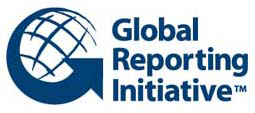

Viewpoints
Viewpoints is a blog in which different writers express their views and opinions on current topics. A new blog post is published about once every four weeks.
You can propose texts by e-mail to viestinta@kesko.fi. The maximum text length is 2,000 characters.
Responsibility reporting is part of company’s everyday activities
Corporate responsibility, social responsibility or sustainability - a dear child has many names. Corporate responsibility and the related objective of transparency has become an established part of large and medium-sized companies’ business. A corporate responsibility report is one of the most significant means of describing the impacts of a company on the environment, society, economy and increasing transparency in the company’s administration.

Reporting provides companies and their stakeholders, such as investors and consumers, with information about the positive and negative environmental and social impacts. Reporting, collecting data and figures is, however, not sufficient. It’s important what figures and information the company publishes, what themes its responsibility report covers and how it describes its challenges and even failures. Transparency and concrete actions to mitigate negative impacts are an essential part of high quality reporting.
Corporate responsibility reporting is a process whose value is much higher than the annual publication of a report. The reporting process provides the company with valuable information about where its challenges and opportunities lie and what to pay attention to from the viewpoint of risk management. Significant information includes, for example, the risk of child or forced labour or other human rights issues in the company’s operations or subcontractor chain.
Information collected during the reporting process also provides precious data to the company management and board of directors, and a smart company embeds responsibility in the purchasing chain, strategic planning, remuneration systems, and board discussions.
Global Reporting Initiative publishes the responsibility reporting guidelines which are the most widely used across the world. The new G4 version of the guidelines places an emphasis on defining the major impacts of operations together with stakeholders and reporting on them. The guidelines also include reporting on the impacts of the subcontractor chain, which may be challenging but very material when studying the social and environmental impacts of retail trade, for example. Since 1997, GRI has also provided indicators for climate change and greenhouse emissions.

The author Tuulia Syvänen is Chief of Staff at Global Reporting Initiative GRI. Further information available at www.globalreporting.org .
Kesko’s Corporate Responsibility Report has been prepared in line with the G4 guidelines.